A few weeks ago, we took a look at the QNAP TL-D400S 4-bay DAS. Now, it is time to look at the 8-bay version, the QNAP TL-D800S. These high-performing DAS units use SATA connectivity rather than a USB 3 connection. Moreover, they are applicable to systems beyond just QNAP NAS devices. They can also be used in standard systems. We looked at the first system in the Everything Fanless Home Server Firewall Router and NAS Appliance piece. For our next system review coming later this week, we wanted to see if the 8-bay unit would work.
QNAP TL-D800S Review An 8-Bay SATA JBOD DAS
The JBOD itself looks a lot like a QNAP 8-bay 3.5″ NAS. One can see we get a very familiar layout.
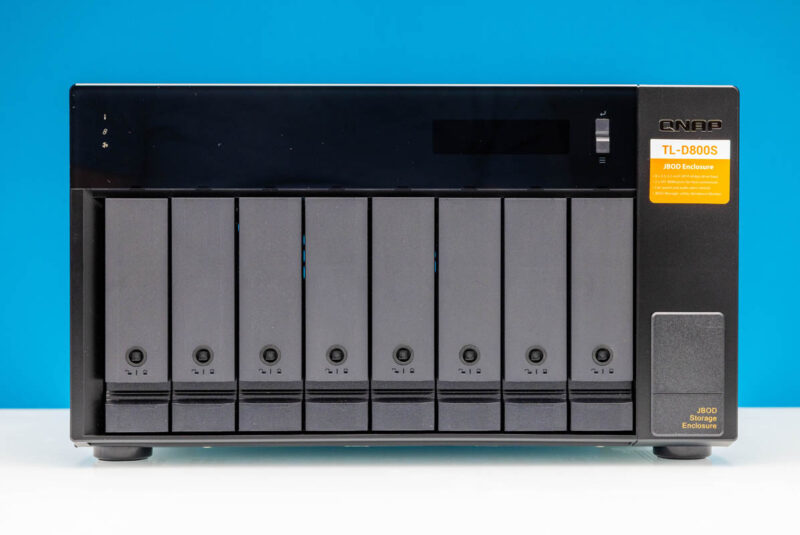
One nice feature is that the drive trays are tool-less for 3.5″ drives. If they were not, it would mean 32 screws to get drives installed.
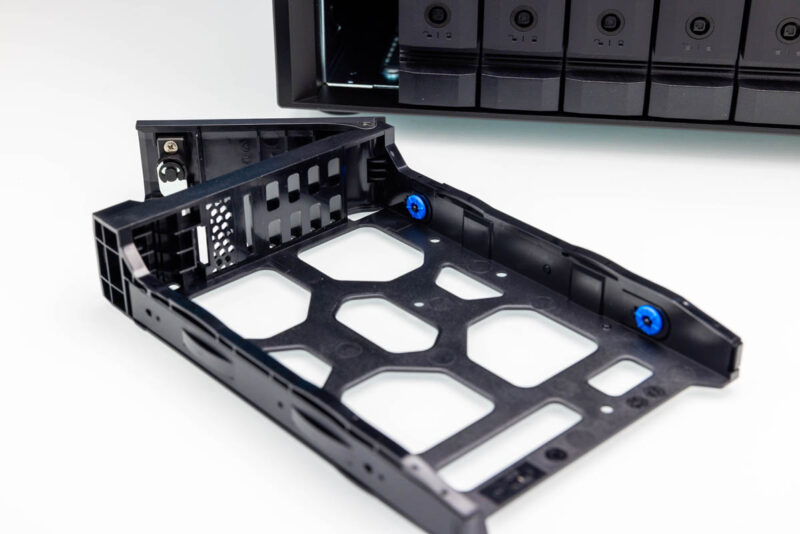
One strange thing is that the trays look similar, but were slightly different than the ones in the 4-bay QNAP TL-D400S. We are not sure why these could not be standardized.
Here is a shot at the SATA backplane.
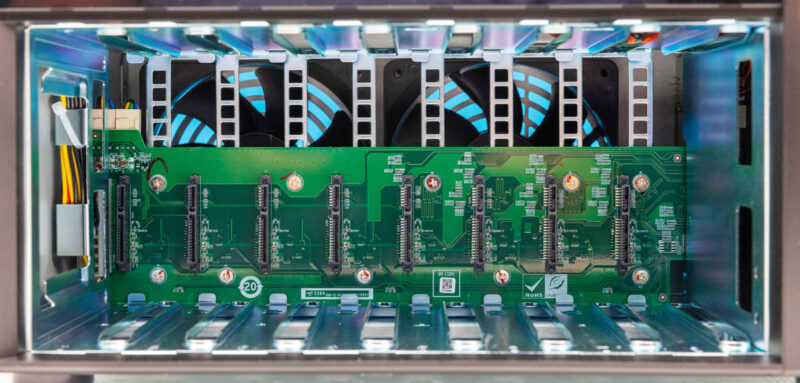
Here is the rear of the chassis. On a NAS, the top left would be where the expansion slots would be, but that is blank in the JBOD version.
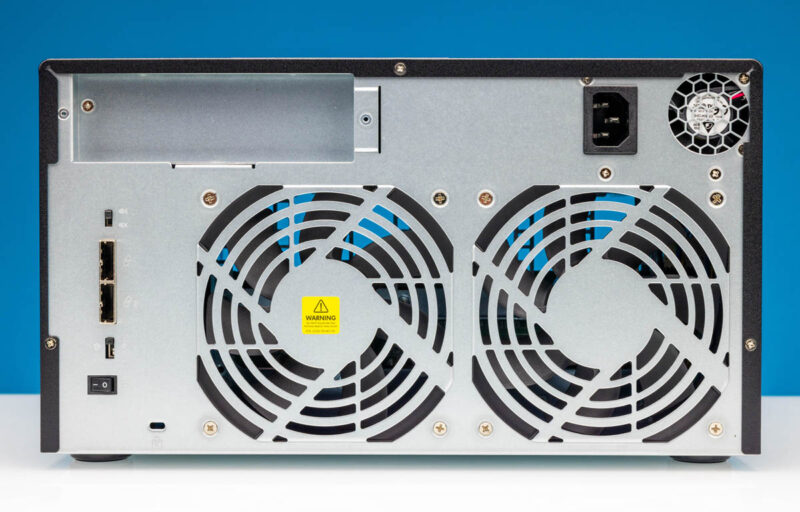
In terms of ports, we have two SFF-8088 ports. QNAP supplies two 1m SFF-8088 to SFF-8088 cables with the JBOD. 1m is also the maximum rated length of cables since this is SATA-only.
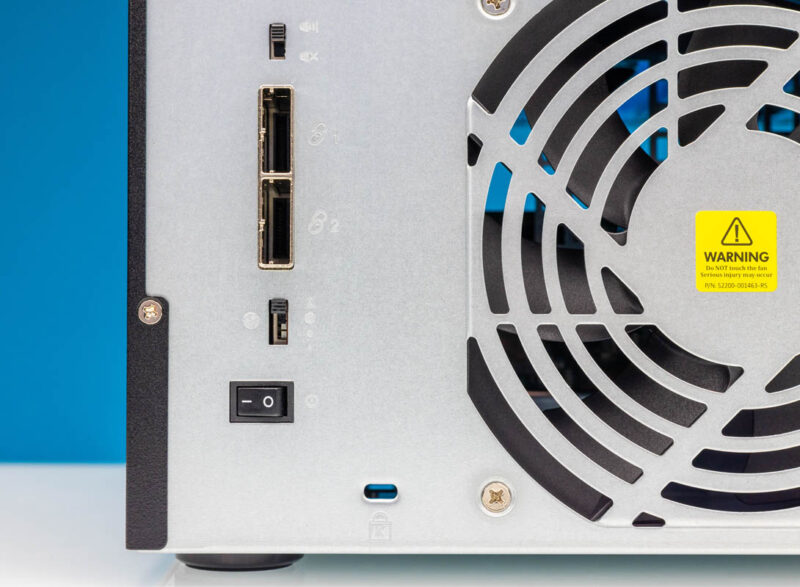
The JBOD can be used with other controllers, but it comes with a QNAP QXP-800eS-A1164. This is an 8-port external card with two SFF-8088 ports, each carrying four SATA lanes.
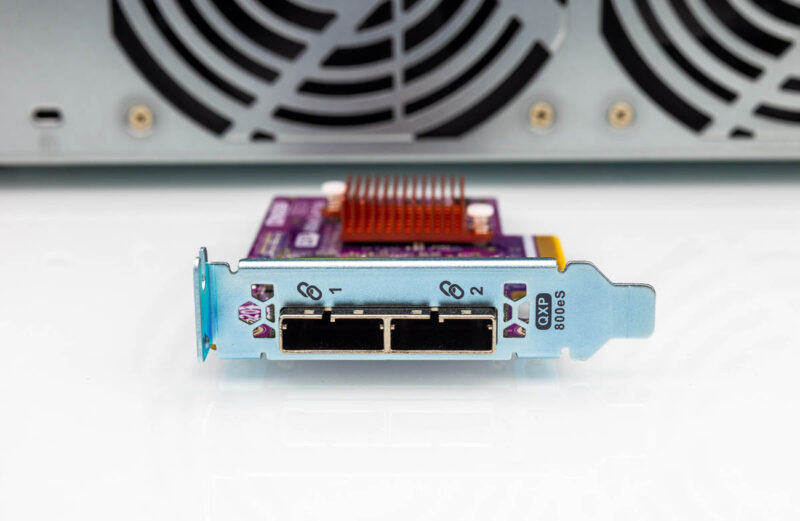
QNAP has a strange way of making this work with two ASMedia A1164 chips and then a PCIe switch.
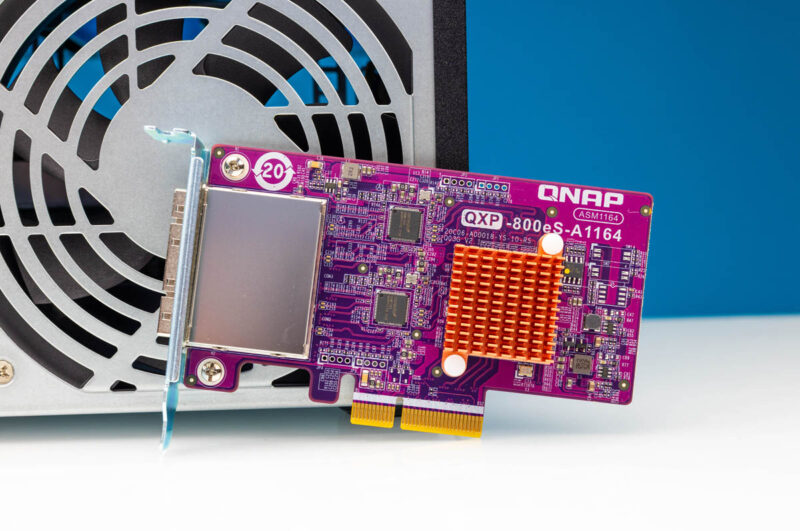
The ASM1164 is a fairly slow SATA controller, but it works in OSes like Linux and Windows out of the box.
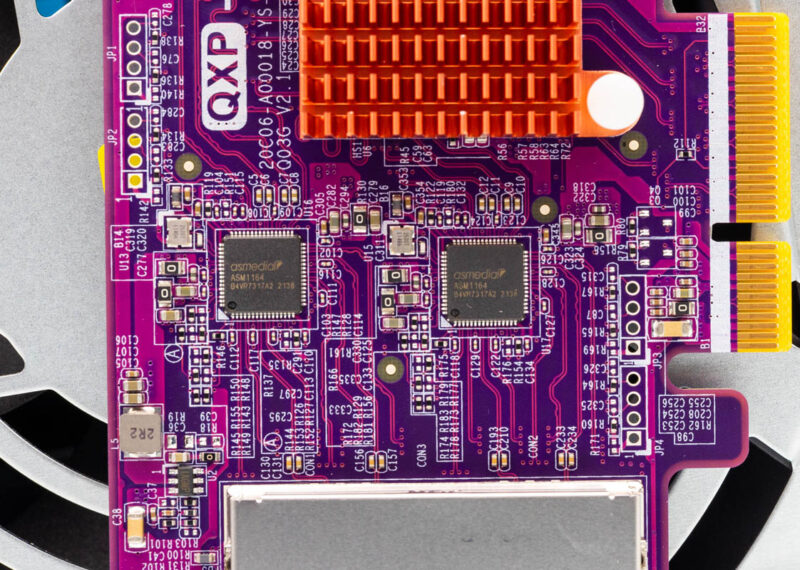
Here is a block diagram of how this works. Each ASM1164 is a PCIe Gen3 x2 controller so there is less bandwidth between the controller and host than there is total on the SATA side (6.0Gbps x 4 = 24Gbps of SATA with 32Gb/s of back-haul bandwidth combined from the two controllers.
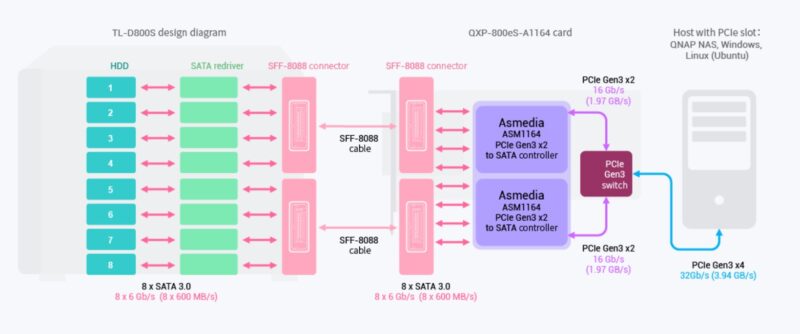
Here is the back of the card just for completeness.
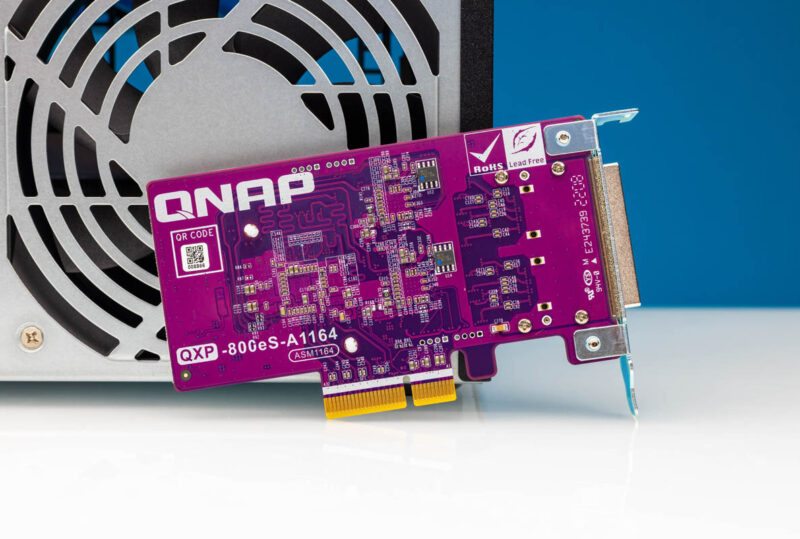
We installed 18TB WD drives and they were seen immediately in Windows and Linux. Even with only 18TB drives, that is 144TB of raw capacity, a healthy figure.
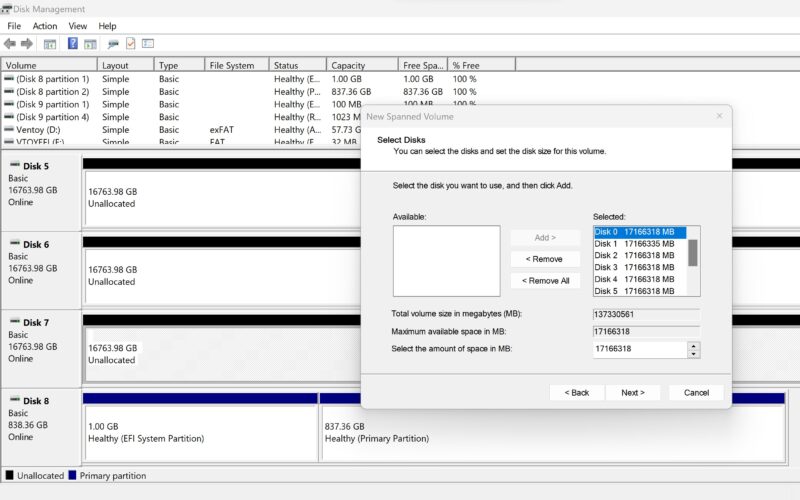
Next, let us get to the performance.

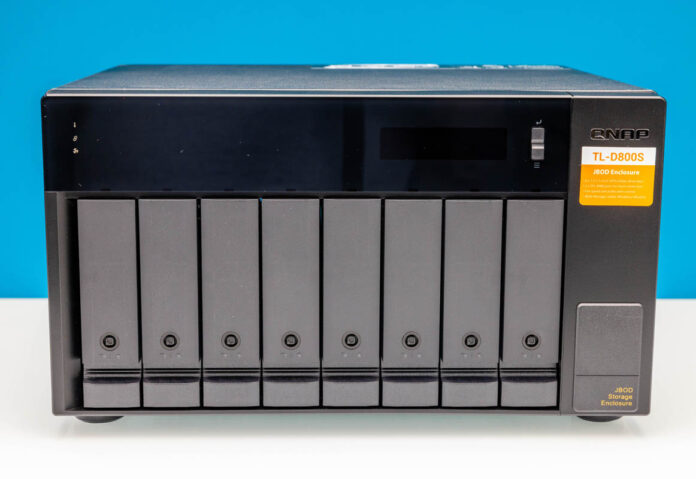

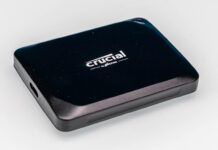

any clue how is the speed of this unit in usb-c version? d800c?
Does this work with TrueNAS ?